From indications shown on the chart when front 's' passes position 'v' the ? [ Certification weather ]
Question 142-1 : Veer and remain more or less at the same speed veer and increase back and remain more or less at the same speed back and decrease
When front 'g' passes position 't' the surface wind should . 350 ?
Question 142-2 : Veer and increase veer and decrease back and increase back and decrease
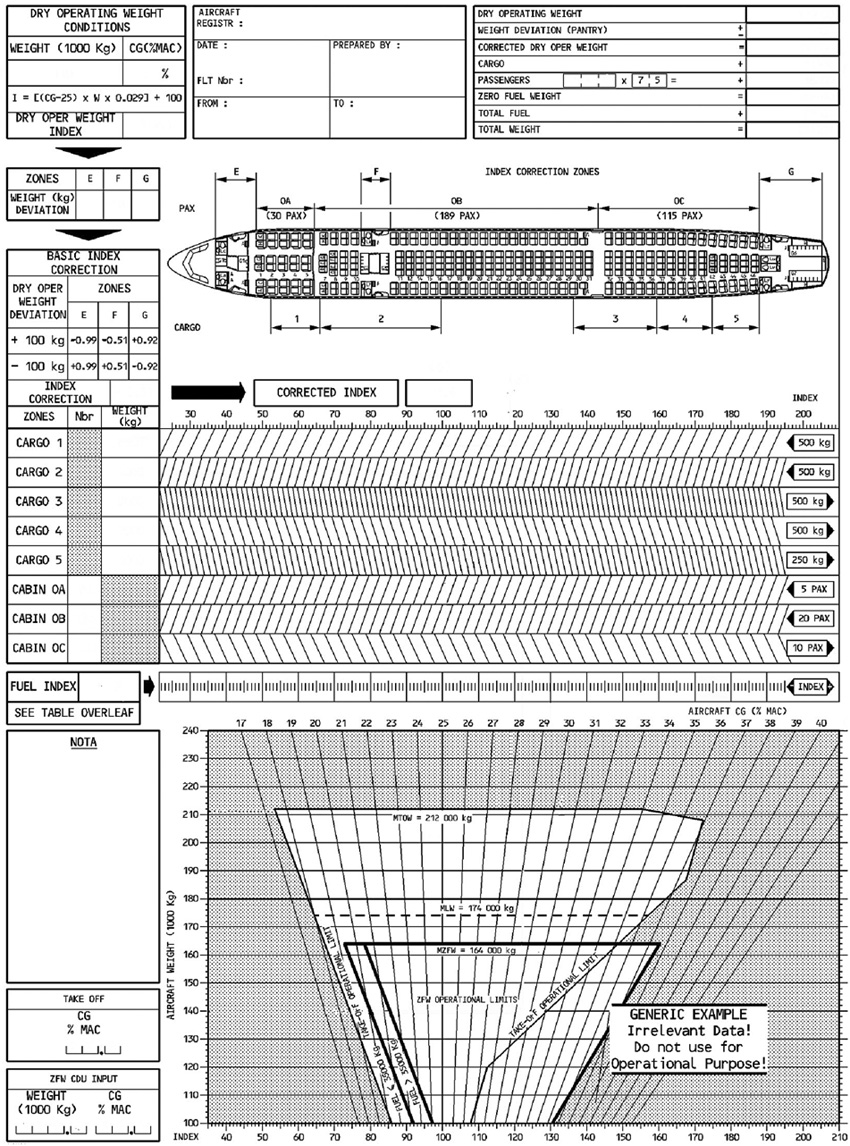 Veer and increase
Veer and increase What conditions are most likely to prevail at an aerodrome located in square 3b ?
Question 142-3 : 6 8 oktas sc and st visibility moderate to poor in drizzle broken cu base 2000 ft visibility more than 5 km occasional showers of rain or snow mainly overcast at 8000 ft visibility less than 5 km in continuous moderate rain intermittent thunderstorms otherwise generally clear skies with good visibility
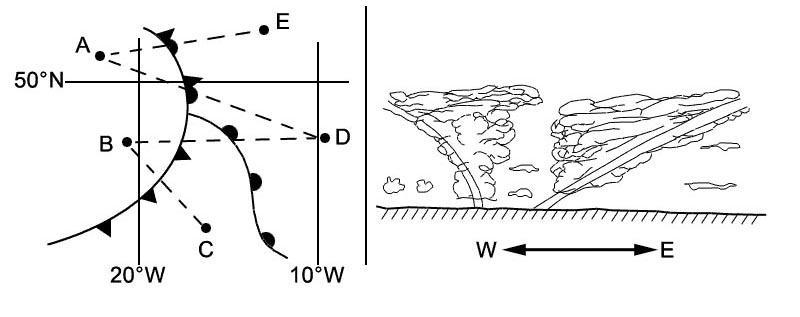 6 - 8 oktas sc and st, visibility moderate to poor in drizzle
6 - 8 oktas sc and st, visibility moderate to poor in drizzle For an aircraft at fl 80 ahead of the front in square 2d the expected flight ?
Question 142-4 : Below as type cloud generally smooth air with light precipitation overcast skies moderate to heavy turbulence with the possibility of thunderstorms imc in cumuliform cloud moderate turbulence with a risk of rime icing high ci and cs type cloud light turbulence and poor visibility
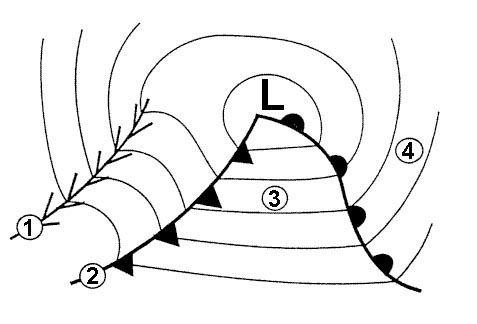 Below as type cloud, generally smooth air with light precipitation.
Below as type cloud, generally smooth air with light precipitation. The air mass type indicated by arrow number 4 is designated . 352 ?
Question 142-5 : Maritime tropical continental polar maritime polar continental tropical
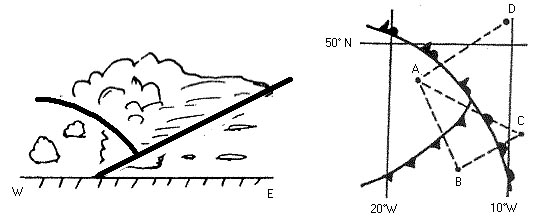 Maritime tropical.
Maritime tropical. The weather most likely to be experienced at position a is . 353 ?
Question 142-6 : Mainly overcast with stratus or stratocumulus and drizzle medium to strong winds clear skies good visibility in light winds cumulus cumulonimbus clouds heavy rain or snow showers medium to strong winds radiation fog low stratus drizzle no medium or upper cloud light wind
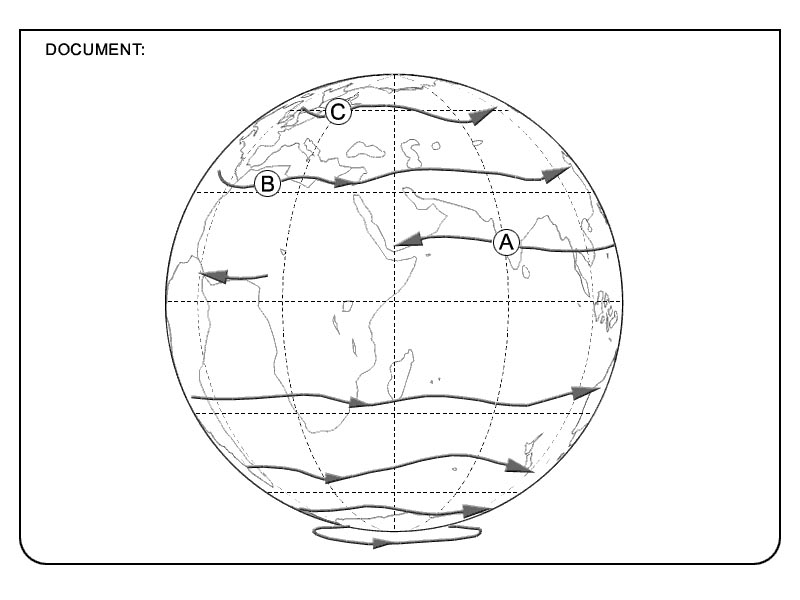 Mainly overcast with stratus or stratocumulus and drizzle, medium to strong winds
Mainly overcast with stratus or stratocumulus and drizzle, medium to strong winds The widest precipitation zone occurs usually ?
Question 142-7 : Ahead of a warm front ahead of a cold front in rear of a cold front in rear of a warm front
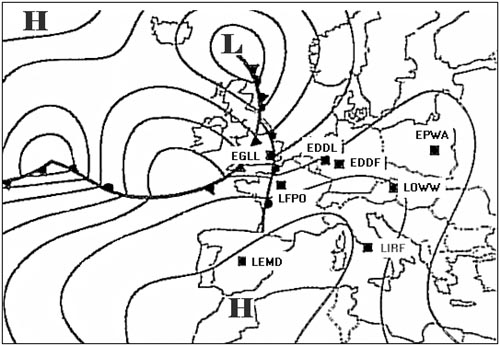 Ahead of a warm front.
Ahead of a warm front. The slope and speed of a warm front compared to the slope and speed of a cold ?
Question 142-8 : Smaller and slower greater and faster greater and slower smaller and faster
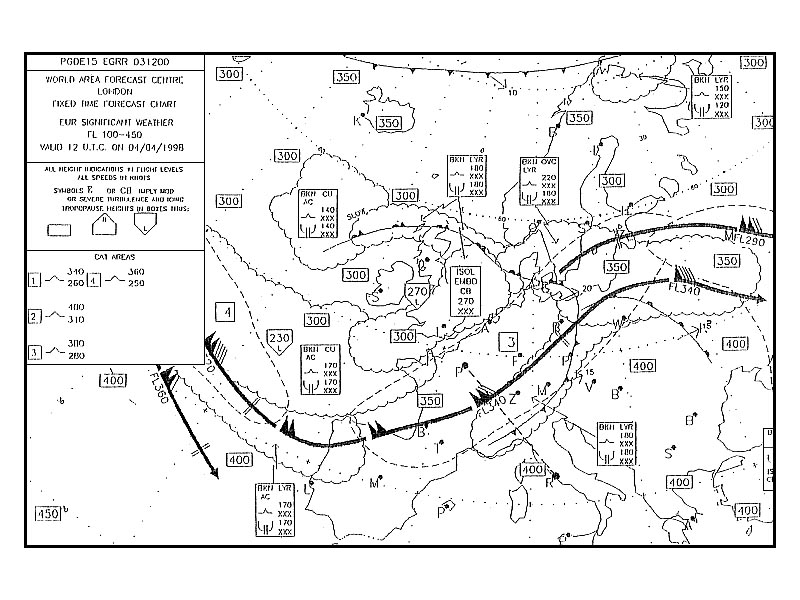 Smaller and slower.
Smaller and slower. The air mass affecting position 'a' is most likely to be . 354 ?
Question 142-9 : Maritime polar continental tropical continental polar maritime tropical
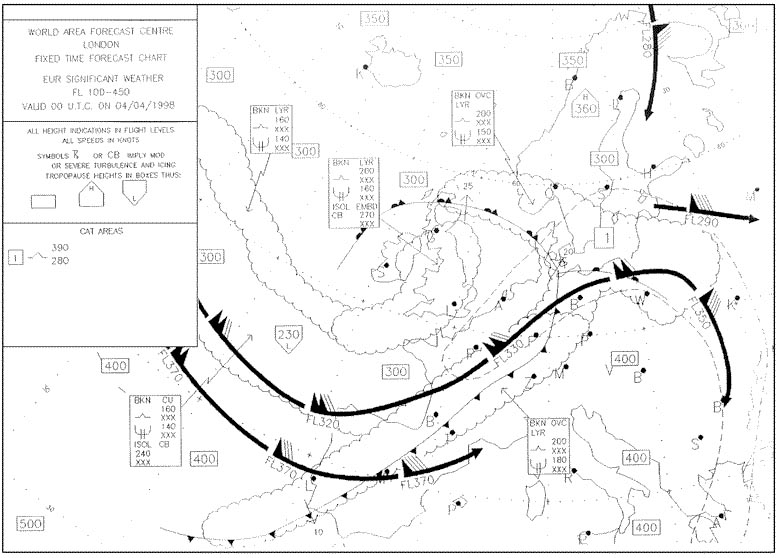 Maritime polar.
Maritime polar. The air mass affecting position 'r' is most likely to be . 358 ?
Question 142-10 : Maritime polar continental tropical continental polar maritime tropical
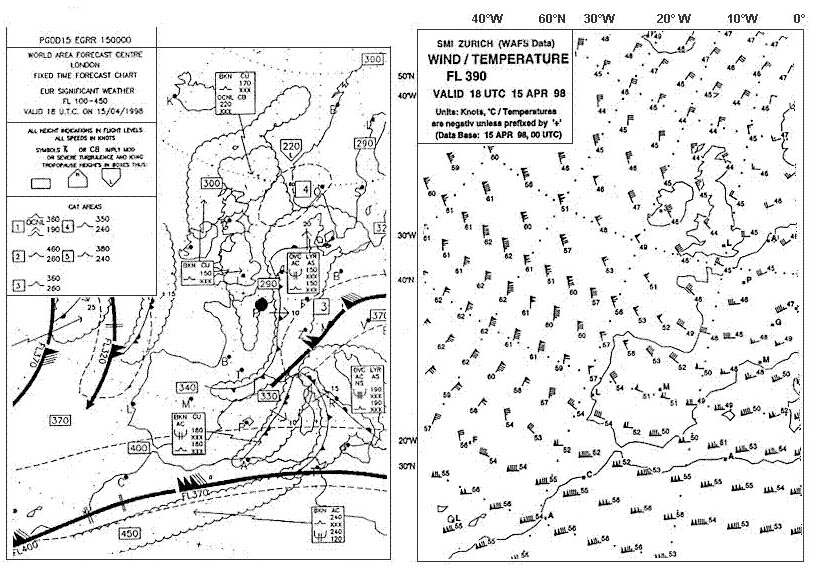 Maritime polar.
Maritime polar. The air mass affecting position 'c' is most likely to be . 359 ?
Question 142-11 : Maritime tropical continental tropical maritime polar continental polar
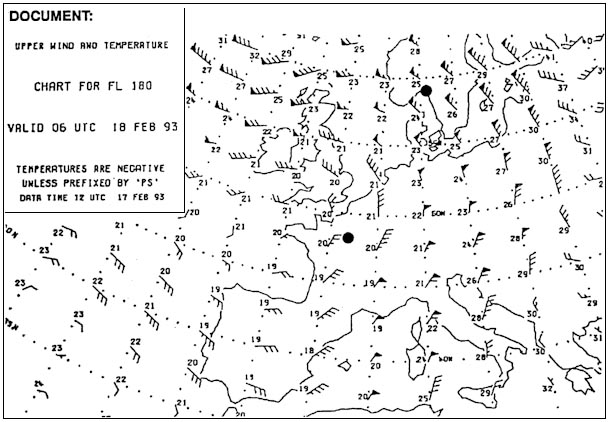 Maritime tropical.
Maritime tropical. During the passage of a front in the northern hemisphere the wind veers this ?
Question 142-12 : True not true only true for the passage of a cold front only true for the passage of a warm front
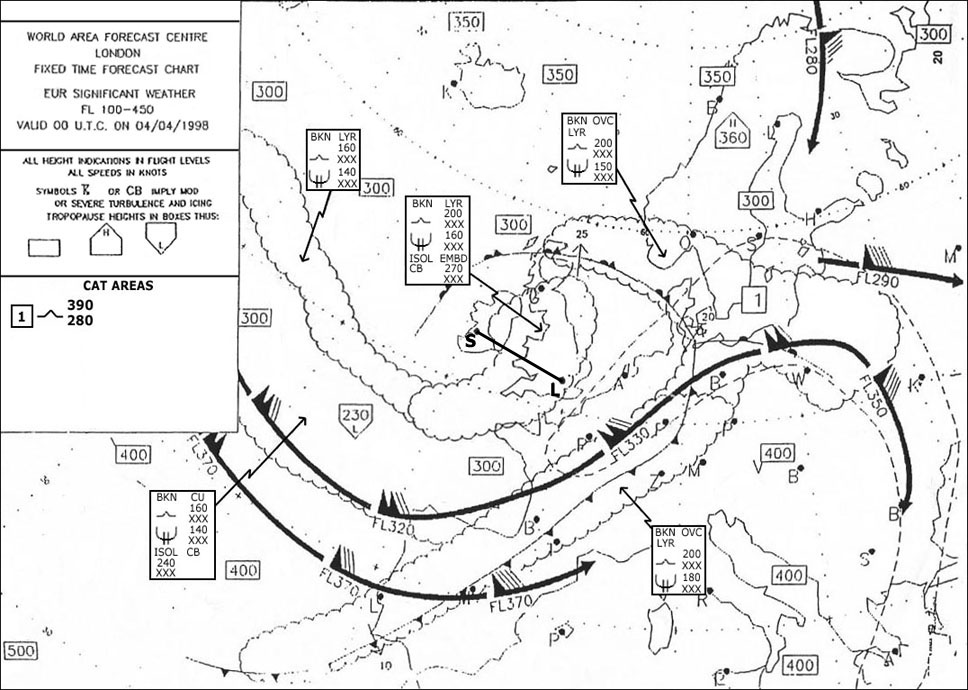 True.
True. In the northern hemisphere advection of warm air aloft indicates ?
Question 142-13 : The approach of a warm occlusion backing winds with increasing heights increasing probability for showers the formation of advection fog
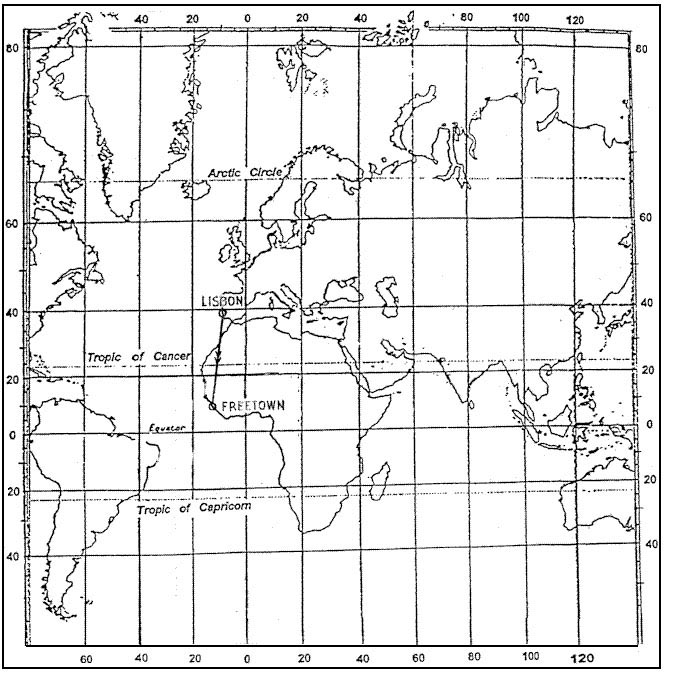 The approach of a warm occlusion.
The approach of a warm occlusion. An air mass is ?
Question 142-14 : An extensive body of air within which the temperature and humidity in horizontal planes are practically uniform a large body of air with temperature and humidity constant in the vertical a body of air with a volume of not more than thousand cubic kilometres a large body of air within which the temperature and humidity is uniform in horizontal and vertical planes
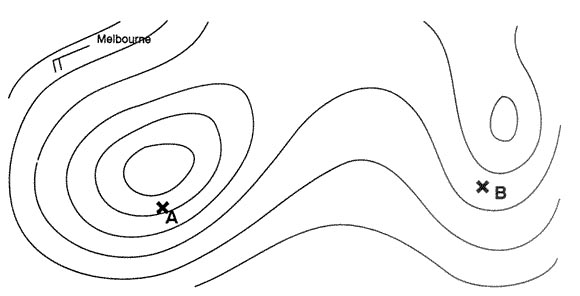 An extensive body of air within which the temperature and humidity in horizontal planes are practically uniform.
An extensive body of air within which the temperature and humidity in horizontal planes are practically uniform. A stationary front is a front in which ?
Question 142-15 : There is no horizontal motion perpendicular to the front there is no difference in temperature between the two air masses there is no wind on both sides of the front there are never frontal clouds
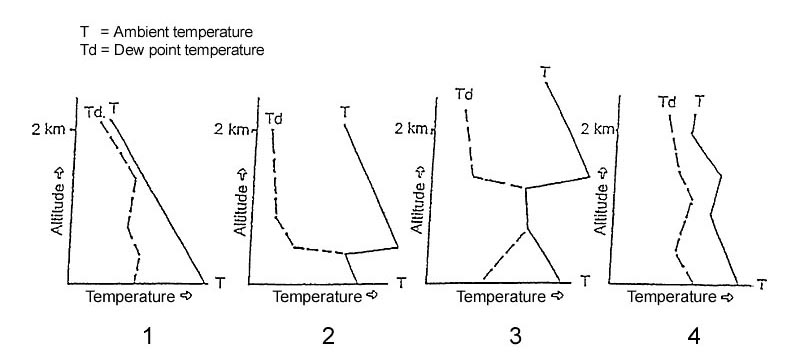 There is no horizontal motion perpendicular to the front.
There is no horizontal motion perpendicular to the front. An air mass acquires its basic properties ?
Question 142-16 : By stagnation of the air for a long period of time over areas having particular characteristics by the influence of jet streams by widespread thunderstorms in the westerlies of the mid latitudes
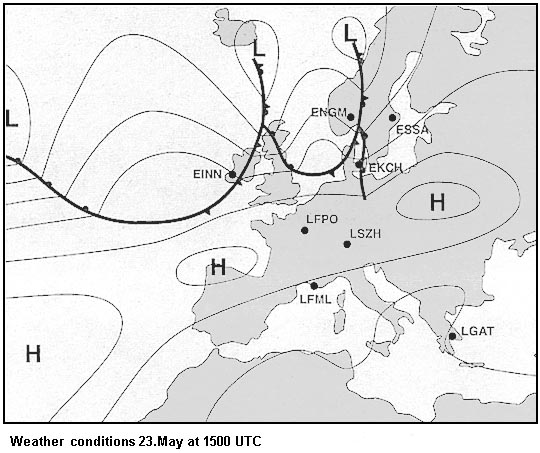 By stagnation of the air for a long period of time over areas having particular characteristics
By stagnation of the air for a long period of time over areas having particular characteristics An occlusion is called a warm occlusion when the cold air ?
Question 142-17 : At the rear of the occlusion is less cold than the cold air ahead with the warm air at a higher altitude ahead of the surface position of the occlusion is only at a higher altitude at the rear of the occlusion is colder than the cold air ahead at the rear of the occlusion is colder than the cold air ahead with the warm air at a higher altitude
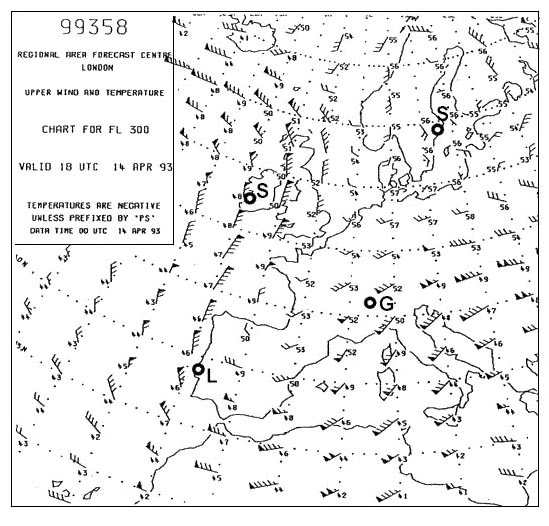 At the rear of the occlusion is less cold than the cold air ahead, with the warm air at a higher altitude.
At the rear of the occlusion is less cold than the cold air ahead, with the warm air at a higher altitude. At a cold front ?
Question 142-18 : Warm air is lifted as cooler air pushes under it warm air is compressed as cold air rises over it temperature rises owing to increased pressure fog will form from the interaction of cold and warm air
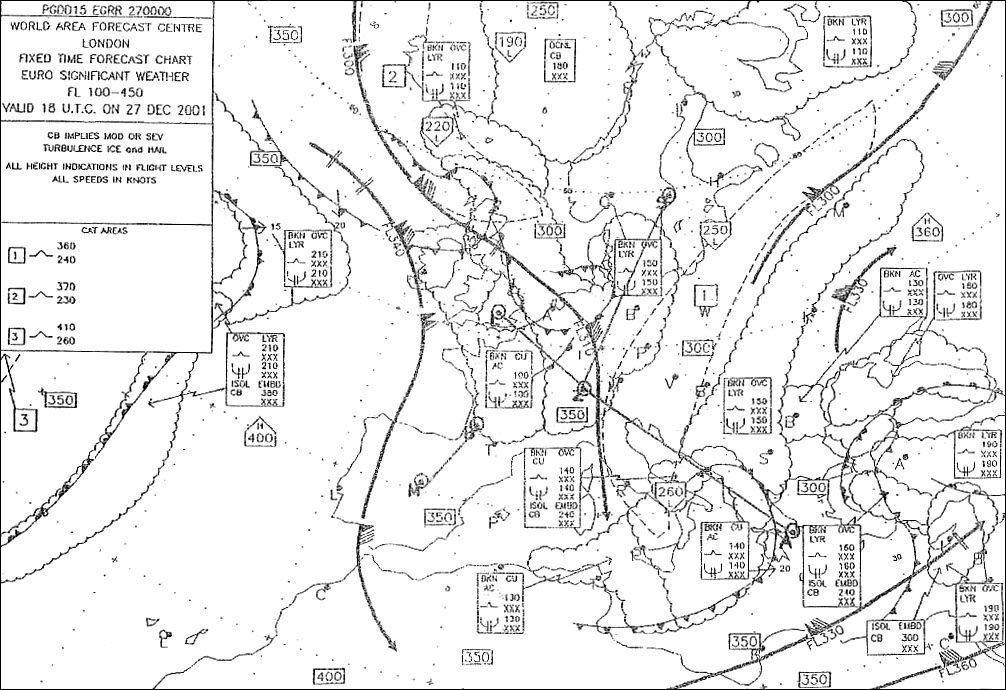 Warm air is lifted as cooler air pushes under it.
Warm air is lifted as cooler air pushes under it. At a station at the surface the significant weather with a warm front will come ?
Question 142-19 : Mostly before the front passes only at the same time as the front passes after the front has passed after the warm sector has passed
 Mostly before the front passes.
Mostly before the front passes. The diagram of the system represents a . 362 ?
Question 142-20 : Warm occlusion cold occlusion warm front cold front
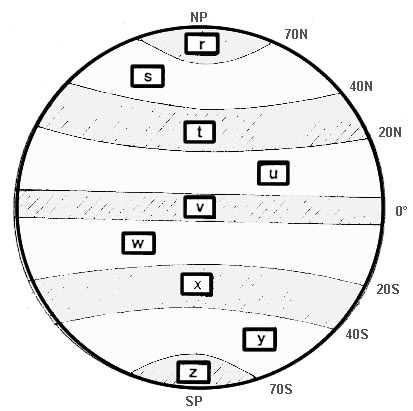 Warm occlusion.
Warm occlusion. The warm sector is indicated by number . 364 ?
Question 142-21 : 3 4 1 2
 3.
3. A convergence line is indicated by number . 364 ?
Question 142-22 : 1 2 3 4
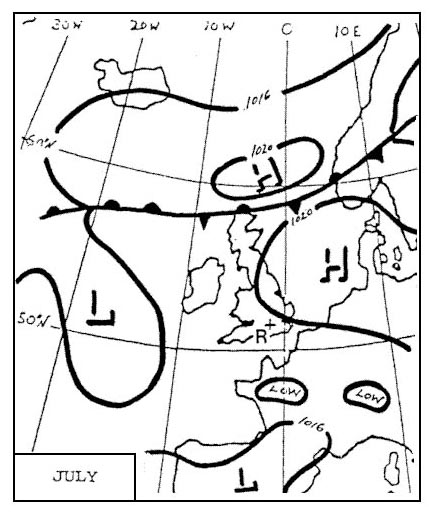 1.
1. In which air mass are extremely low temperatures encountered ?
Question 142-23 : Continental polar air maritime polar air continental tropical air maritime arctic air
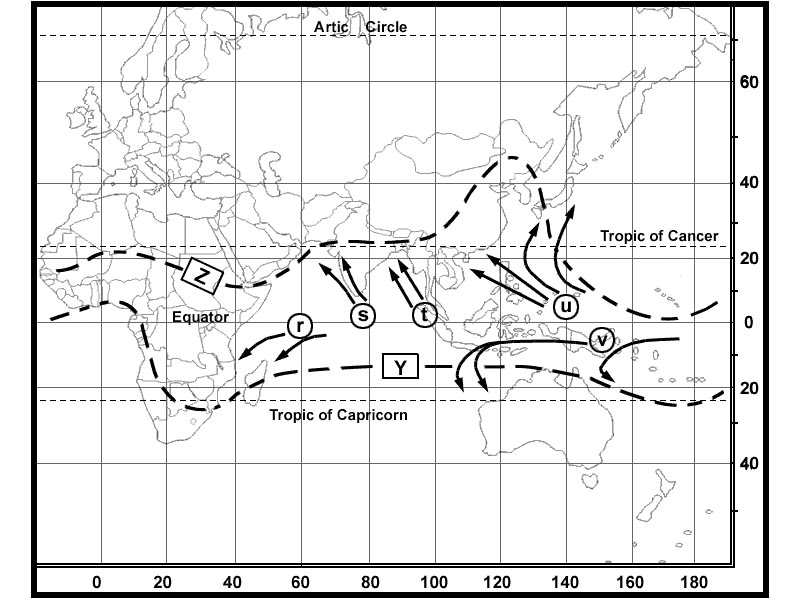 Continental polar air.
Continental polar air. At lyon lfly n4545 e00500 at 1200 utc the sky is overcast with stratocumulus ?
Question 142-24 : 2100 utc 1330 utc 0300 utc the following day 1215 utc
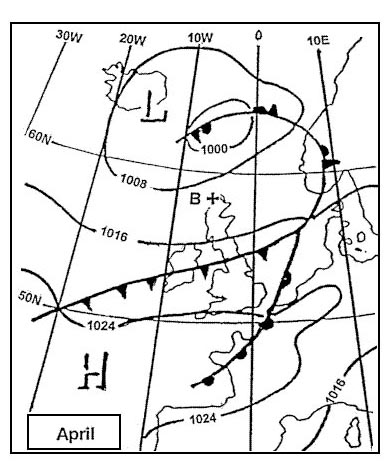 2100 utc.
2100 utc. The following sequence of clouds is observed at an airport cirrus cirrostratus ?
Question 142-25 : The passage of a warm front the passage of a cold front anticyclonic weather the passage of a squall line
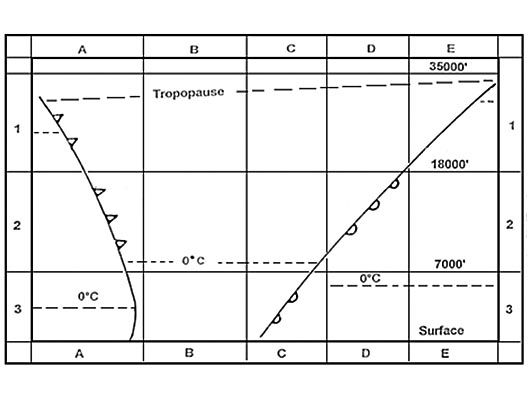 The passage of a warm front.
The passage of a warm front. The average slope of a cold front is in the order of ?
Question 142-26 : Of 1 80 of 1 800 of 1 500 of 1 10
 Of 1:80.
Of 1:80. The average position of the polar front in the northern hemisphere is ?
Question 142-27 : More southerly during the winter than during the summer more southerly during the summer than during the winter located near 55°n during the whole year located near 65°n during the whole year
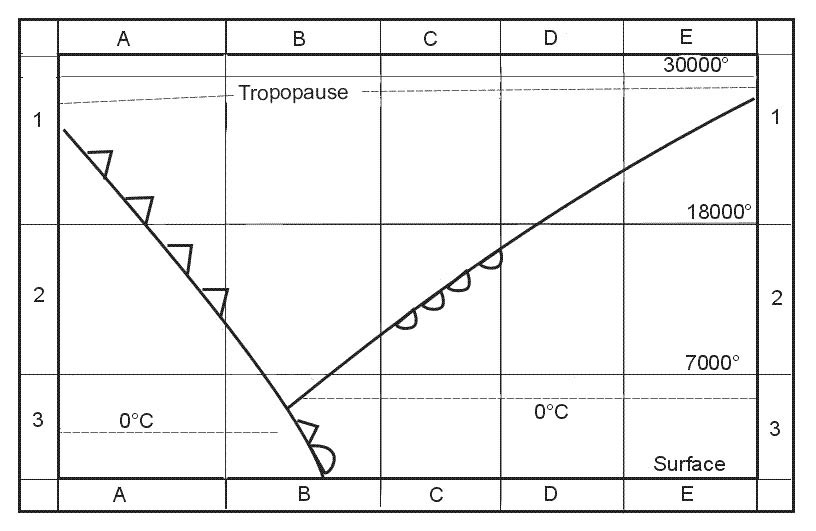 More southerly during the winter than during the summer.
More southerly during the winter than during the summer. The arctic front is the boundary between ?
Question 142-28 : Polar air and arctic air polar air and tropical air cold polar air and less cold polar air arctic air and tropical air
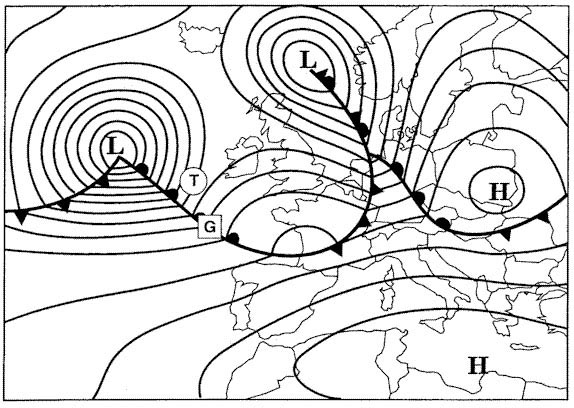 Polar air and arctic air.
Polar air and arctic air. Which of the following statements is correct ?
Question 142-29 : Normally atmospheric pressure stops falling rapidly behind a warm front the air temperature rises cumulus clouds and a good visibility are normally observed in a warm sector in autumn cumulus clouds and a good visibility are normally observed in a warm sector in winter at warm fronts thunderstorms are often observed
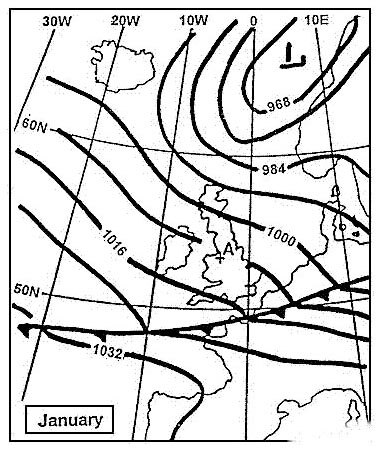 Normally atmospheric pressure stops falling rapidly behind a warm front, the air temperature rises.
Normally atmospheric pressure stops falling rapidly behind a warm front, the air temperature rises. Which statement concerning the cold front and warm front of a frontal ?
Question 142-30 : The risk of fog is greater ahead of and behind the warm front than ahead of and behind the cold front the precipitation zone of the cold front is in general wider than the precipitation zone of the warm front while occluding the warm front always becomes a front aloft the wind backs more at the warm front than at the cold front
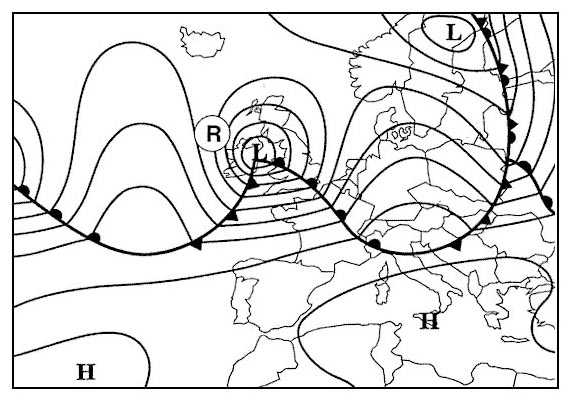 The risk of fog is greater ahead of and behind the warm front than ahead of and behind the cold front.
The risk of fog is greater ahead of and behind the warm front than ahead of and behind the cold front. Frontal thunderstorms are mainly associated with ?
Question 142-31 : Cold fronts ridges of high pressure cols warm fronts
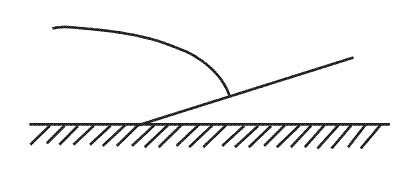 Cold fronts.
Cold fronts. An air mass which originates over the north atlantic between 50 and 70 degrees ?
Question 142-32 : Maritime polar air continental arctic air maritime arctic air continental polar air
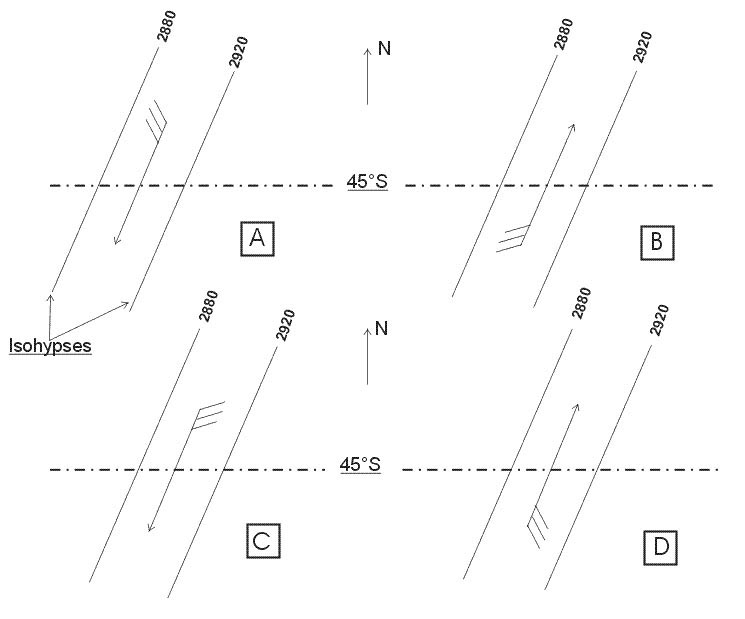 Maritime polar air.
Maritime polar air. Which of the following statements is correct concerning the typical weather in ?
Question 142-33 : Generally moderate to good visibility haze sometimes few or scattered cumulus moderate to poor visibility fog or stratus stratocumulus and drizzle generally good visibility outside the frequent showers of cbs overcast by medium and high clouds stratus with drizzle poor visibility
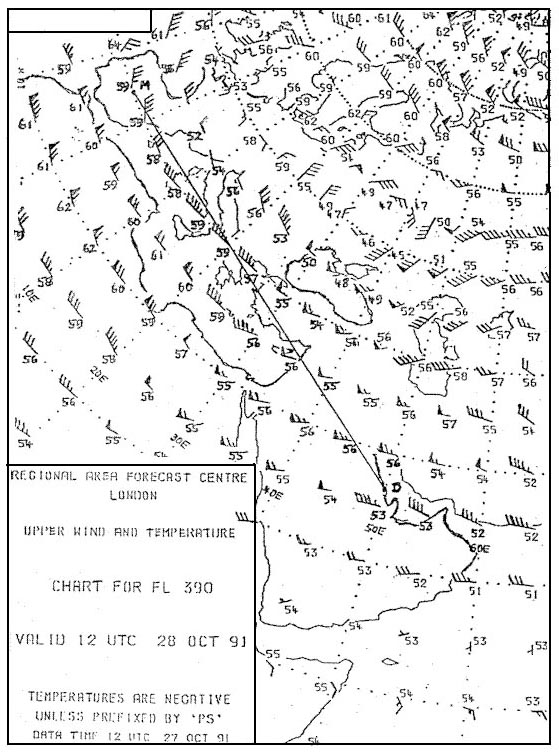 Generally moderate to good visibility, haze, sometimes few or scattered cumulus.
Generally moderate to good visibility, haze, sometimes few or scattered cumulus. The air mass affecting position 's' is most likely to be . 377 ?
Question 142-34 : Maritime tropical and stable continental tropical and unstable maritime polar and stable maritime polar and unstable
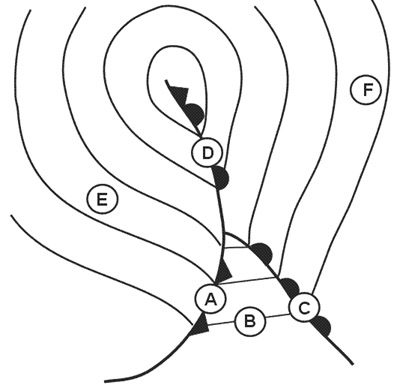 Maritime tropical and stable.
Maritime tropical and stable. In a westerly situation the mean time interval between polar frontal waves in ?
Question 142-35 : One to two days three to four days six to twelve hours twelve to eighteen hours
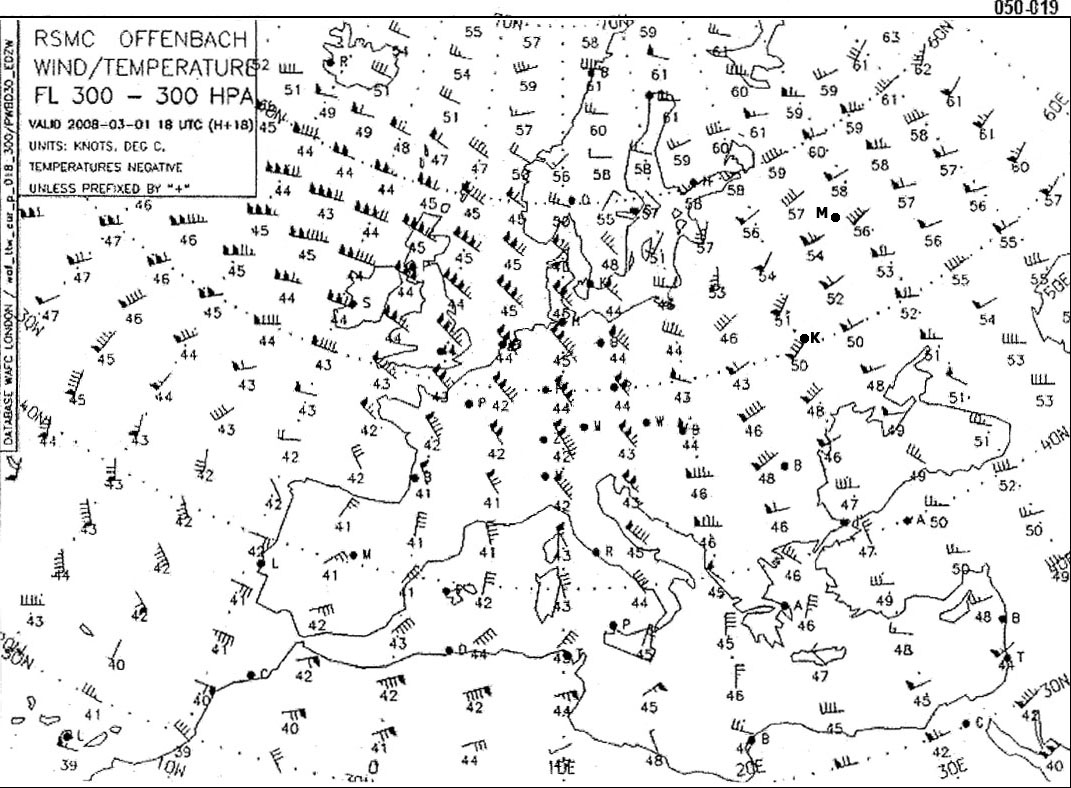 One to two days.
One to two days. What change in temperature will occur at point a during the next hour . 380 ?
Question 142-36 : A drop in temperature a rise in temperature irregular fluctuations approximately constant temperature
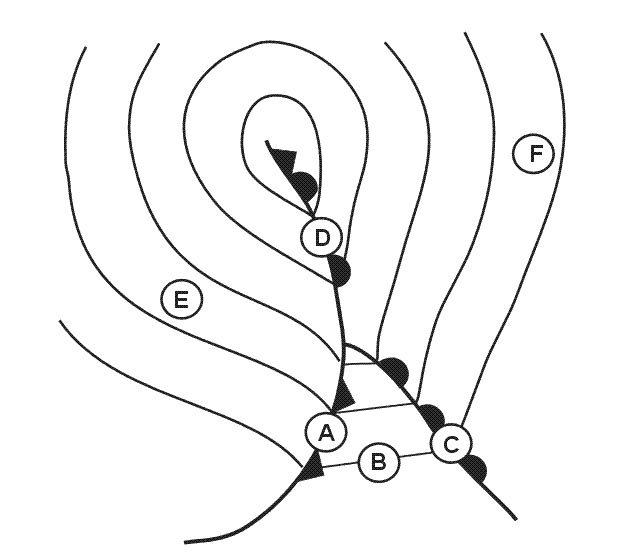 A drop in temperature.
A drop in temperature. The air mass type advected from a direction indicated by arrow number 6 is ?
Question 142-37 : Maritime polar maritime arctic continental arctic continental polar
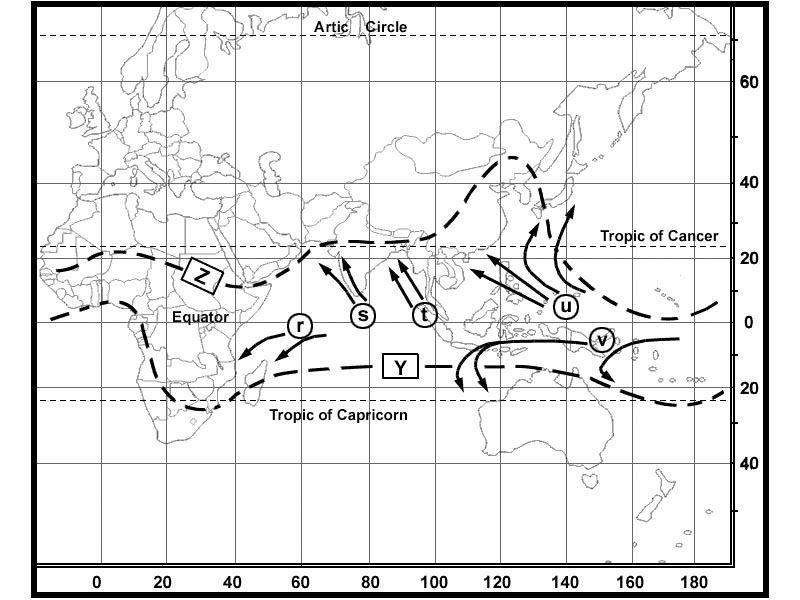 Maritime polar.
Maritime polar. What change in pressure will occur at point f during the next hour . 382 ?
Question 142-38 : A drop in pressure a rise in pressure constant pressure irregular fluctuations
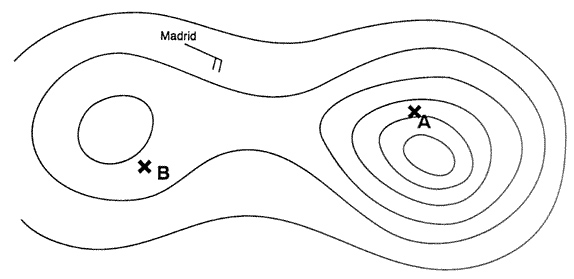 A drop in pressure.
A drop in pressure. During the winter the air mass type advected from a direction indicated by ?
Question 142-39 : Maritime arctic maritime polar continental arctic continental polar
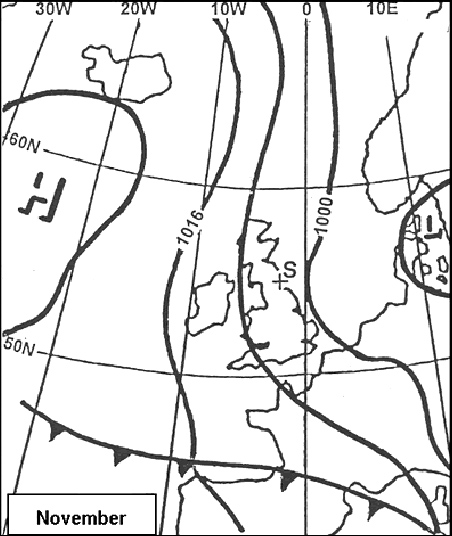 Maritime arctic.
Maritime arctic. Which of the following front types is most known for gusty winds ?
Question 142-40 : Cold front warm front occluded front stationary front
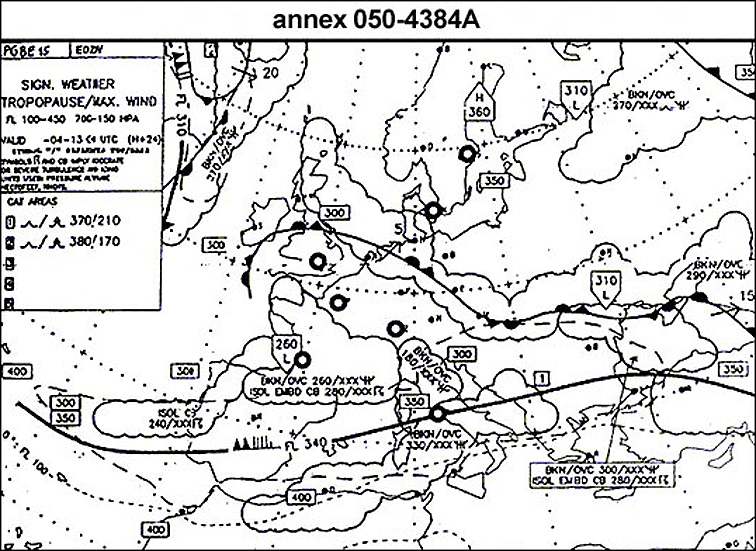 Cold front.
Cold front. ~
Exclusive rights reserved. Reproduction prohibited under penalty of prosecution.
5639 Free Training Exam
